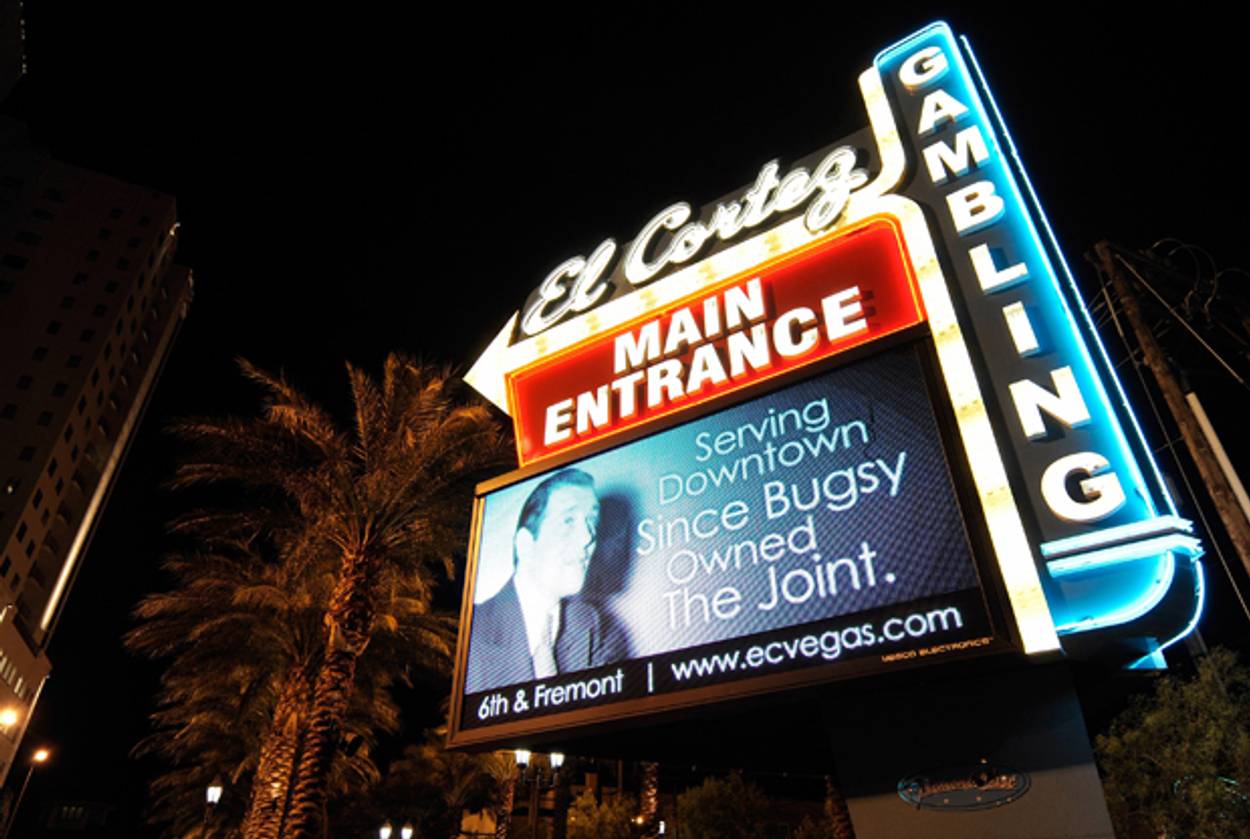Bugsy Siegel’s Coast-to-Coast Crime Empire
How the Jewish gangster helped establish Las Vegas as a gambling mecca




For the past two seasons of Boardwalk Empire, we’ve been given small glimpses into the antics of Meyer Lansky associate Bugsy Siegel, played by Michael Zegen. Back in Season 3, Lansky saved Siegel’s life by shooting down two gunmen. Throughout the rest of the series, now in its final season, we see Siegel as a mostly incompetent gangster who is morally at peace with the idea of murder.
Siegel, like many of his fellow Jewish gangsters, was born in Brooklyn. His early criminal career involved the extortion of street merchants (sort of like Mickey Cohen’s extortion of newspaper boys). Like the rest of Arnold Rothstein’s crew, Siegel became a bootlegger during Prohibition and helped the drug trade get on its feet. He was one of the founders of Jewish hit squad Murder Incorporated, and occasionally acted as a gunman himself.
A few years after the end of prohibition, with opportunities for organized crime popping up across the country, Lansky suggested that Siegel move out west. He headed to Los Angeles, where he started a large gambling network and collaborated with Jack Dragna, the crime boss who essentially ran Los Angeles. Siegel took half-hearted boxer and half-accomplished thug Mickey Cohen under his wing, and Cohen would ultimately take over the empire upon Siegel’s death.
Siegel’s legacy is well-known not only in crime, but in popular culture as well: he was the model for the Moe Green character in The Godfather. Esquire recently named Siegel one of the best-dressed mobsters; and indeed, Siegel was tall and charismatic, and was rather finicky about his appearance, much like his protege Cohen.
He had friends in all manner of places (Cary Grant and Clark Gable included), and while on trial for gambling, Siegel escaped sentencing by asking his pal George Raft to speak on his behalf. The Scarface actor’s testimony did the trick, and Siegel walked free.
But Siegel is perhaps best known for having the brilliant idea of developing a small plot of land a few hours outside of Los Angeles for gambling purposes—a city for casinos in the middle of the desert. His Flamingo hotel became the center of the Las Vegas strip, and also the center of his embezzlement operation.
But Siegel, for all his charm and gangster smarts, didn’t think through what might happen if he stole money from Meyer Lansky. In 1947, when he was 41, Siegel was killed in his home in L.A. Minutes after the news broke, Lansky’s Vegas associates seized Siegel’s casino.
If you’re in New York and feeling nostalgic for the days of Bugsy Siegel, there’s a memorial plaque on the wall of the Bialystoker Synagogue on Manhattan’s Lower East Side for for the infamous gangster and his father Max.
Previous: The Jewish Gangsters of ‘Murder Incorporated’
Related: Why Gangsters Who Broke Every Law Still Went to Services on Yom Kippur
Alexander Aciman is a writer living in New York. His work has appeared in, among other publications, The New York Times, Vox, The Wall Street Journal, and The New Republic.